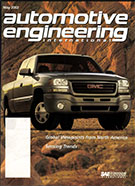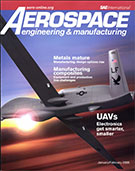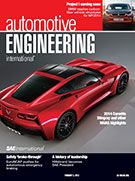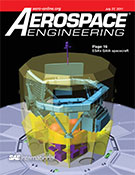Magazine

SAE Truck & Off-Highway Engineering: April 2021
2021-04-01
Material selection for battery enclosures Mass reduction is the main reason BEV makers choose aluminum for battery enclosures, but cost and thermal requirements favor steel and polymer composites. Startup targets medium-duty EVs Atlis Motors purpose-engineers nearly all the vital components for an electric pickup and platform capable of spanning several market segments. High-voltage hybrids FEV engineers evaluate 48V and high-voltage parallel hybrid architectures for Class 6-7 commercial vehicles. Certain setups show more promise than others. Hemphill's mission: Support the innovation ecosystem Schaeffler America CTO Jeff Hemphill brings impressive technical chops and well-honed communication skills to his new role as 2021 SAE International president.



















